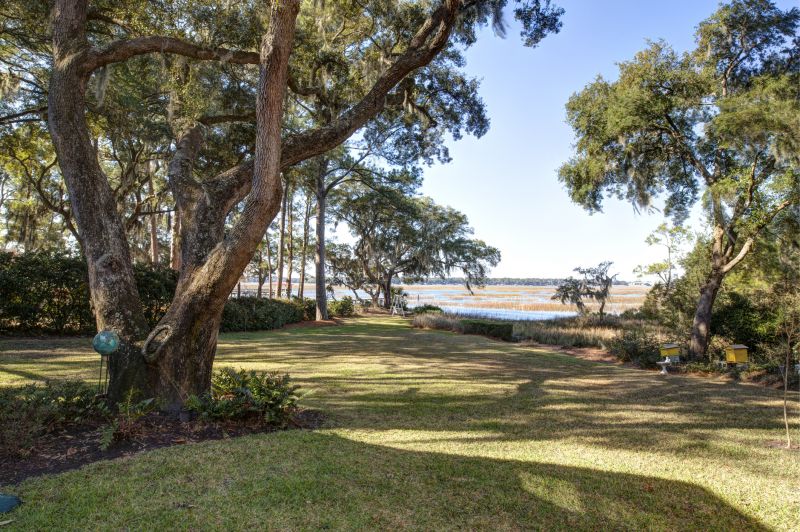Favorite Cedar Clearing Products For Efficient Land Restoration
Select from proven tools and machinery that make cedar removal straightforward and improve your land management results.
 Cedar clearings often require specialized tools and products to effectively manage and maintain the landscape. Whether creating pathways, open spaces, or clearing overgrown areas, selecting the right equipment can make the process more efficient and less labor-intensive. From manual tools to powered machinery, there are numerous options designed to handle the unique challenges posed by cedar trees and dense shrubbery. Properly chosen products can help achieve a cleaner, more manageable clearing while minimizing damage to surrounding vegetation.
Cedar clearings often require specialized tools and products to effectively manage and maintain the landscape. Whether creating pathways, open spaces, or clearing overgrown areas, selecting the right equipment can make the process more efficient and less labor-intensive. From manual tools to powered machinery, there are numerous options designed to handle the unique challenges posed by cedar trees and dense shrubbery. Properly chosen products can help achieve a cleaner, more manageable clearing while minimizing damage to surrounding vegetation.
Top Overall Option
Multi-Purpose Clearing Tool Set
A comprehensive set that includes manual pruners, a pruning saw, and a lightweight brush cutter, designed to handle various tasks involved in cedar clearing. Its versatility makes it suitable for different sizes of projects, from trimming small branches to tackling dense undergrowth. The ergonomic design and durable materials aim to provide comfort and longevity during frequent use.
Types of Products For Cedar Clearings
Manual Pruning Saw
Ideal for precise cuts on smaller branches and saplings, offering control and ease of use.
Loppers
Long-handled cutting tools suitable for reaching and trimming mid-sized branches without ladder use.
Handheld Pruners
Compact tools designed for trimming smaller twigs and young growth with precision.
Chainsaw
Powerful equipment for cutting larger cedar trunks and thick branches efficiently.
Brush Cutter / Weed Whacker
Versatile tools for clearing dense underbrush and small trees, especially in uneven terrain.
String Trimmer
Used for trimming grass and low vegetation around cedar clearings to maintain neatness.
Mulching Attachments
Attach to power tools to shred woody debris and manage debris on-site.
Ground Cover Fabric
Prevents cedar seedlings from re-establishing after clearing, aiding in weed control.
Soil Amendments
Products that improve soil health post-clearing, encouraging desirable plant growth.
Portable Wood Chipper
Transforms woody debris into mulch, reducing waste and facilitating disposal.
Protective Gear
Includes gloves, eye protection, and ear muffs to ensure safety during clearing activities.
Battery-Powered Tools
Cordless options for flexibility and ease of use in various clearing scenarios.
Heavy-Duty Axes
Suitable for splitting and removing larger cedar logs manually.
Post-Harvest Debris Bags
Large capacity bags for collecting and transporting woody debris after clearing.
Ground Penetrating Tools
Tools like root rakes or pry bars to remove stubborn roots and stumps.
Popular Choices
A versatile power tool favored for its portability and ease of handling in cedar clearing tasks.
Popular for tackling dense undergrowth and thick shrubbery efficiently.
Useful for reaching high branches without a ladder, making pruning safer and easier.
Essential for protecting hands during manual clearing and trimming tasks.
Widely used for converting woody debris into mulch, facilitating cleanup.
Popular for maintaining grass and low vegetation in cleared areas.
Important for head protection during heavy-duty cutting and clearing activities.
Favored for their convenience and quiet operation in sensitive areas.
Used for removing remaining stumps after clearing cedar trees.
Popular for preventing cedar regrowth and managing weed growth post-clearance.
Commonly used for manual splitting and removal of larger logs.
Trending for their reach and leverage in pruning mid-sized branches.
When considering products for cedar clearings, it is important to evaluate the extent of the clearing project, the density of the cedar growth, and the terrain. Manual tools such as pruning saws and loppers are suitable for smaller or more delicate tasks, allowing for precise cuts and control. For larger areas or tougher growth, powered equipment like brush cutters, chainsaws, and clearing saws can significantly speed up the process. Safety gear and accessories should also be prioritized to ensure safe operation during the clearing work.
Maintenance and ongoing management are also critical factors. Products like weed trimmers or brush grinders can help keep cleared areas tidy over time, preventing regrowth and overgrowth. Additionally, soil management tools and mulch can be used post-clearing to promote healthy ground cover and prevent cedar seedlings from re-establishing quickly. Choosing versatile and durable products suited to your specific landscape needs will lead to more successful and sustainable cedar clearing efforts.
Key Buying Considerations
- Assess the size and density of cedar growth to determine the appropriate tools and power levels.
- Consider the terrain and accessibility of the clearing site for selecting portable versus heavy-duty equipment.
- Evaluate safety features such as guards, safety switches, and protective gear compatibility.
- Determine whether manual, electric, or gas-powered tools best suit your project scope and frequency of use.
- Look for ergonomic designs to reduce fatigue during extended clearing sessions.
- Check for compatibility of attachments and accessories to expand the versatility of your equipment.
- Prioritize durability and material quality for long-term performance in tough conditions.
- Consider noise levels and emissions if working in sensitive or residential areas.
- Review maintenance requirements and availability of spare parts or replacements.
- Estimate your budget and compare features to find the best value for your needs.
- Think about storage space for larger equipment and ease of transport.
- Identify if additional tools such as soil amendments or debris collection systems are needed for post-clearing management.
- Assess the potential for future clearing projects and whether investing in adjustable or modular tools makes sense.
- Ensure compatibility with existing safety gear and accessories for comprehensive protection.
- Research user reviews and expert recommendations for insights into real-world performance.
This page contains affiliate links. We may earn a commission if you purchase through these links, at no additional cost to you.
